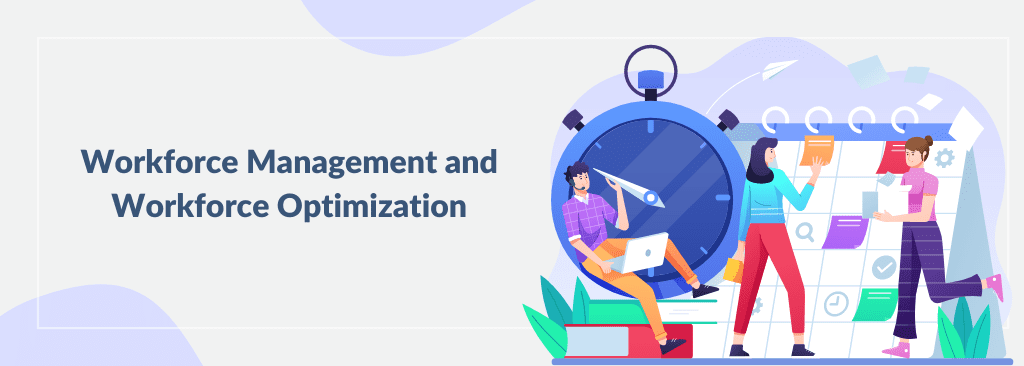Workforce Optimization and Workforce Management in Contact Center – For Efficient Operations
More than 50% of contact center representatives are losing daily hours managing and navigating multiple tasks, different business apps, information and communication channels, and various reporting systems.
When you break this down, agents have found it difficult to:
- Find the right answers to customer questions
- Make a choice on the different answers given by different systems and information sources
- Hop from one application or window to another
- Keep up with all the new information and changes
These challenges have led to agents’ stress, and they start to feel burnout.
This is a real problem.
What is Workforce Optimization & Management?
Today’s workforce demands meaningful work, learning opportunities, flexibility, and the opportunity to work from anywhere and collaborate in real-time. All this while ensuring productivity and excellent customer experience.
Workforce management (WFM) and Workforce optimization (WFO) solutions can help you provide the right environment for your agents to perform.
Before getting to WFM and WFO, let us look at the housekeeping activities that must be in place for your agents to feel comfortable.
Housekeeping Checklist
- You need to have all your systems integrated with your contact center
- You should have a single view of your customers either on your contact center platform or on your CRM, depending upon how you view your business
- Your customer experience platform should be integrated with knowledge base and FAQs, allowing you to provide the best possible positive experience
- Cloud enablement of your platform so that agents can work from anywhere in the world and still respond to your customer queries
- Seek constant feedback from your customer-facing agents to understand the burning needs of your customers and address them on a war footing
- Continuous ongoing training of agents to be relevant to your customers
Now that we have spoken about the housekeeping checklist, let us focus on WFM and WFO.
Workforce Management and Workforce Optimization
Workforce management will allow you to direct the queries to the right agents with the right skills at the right location at any given point in time. It doesn’t matter which channel the question comes through – chatbot, IVR, website, email, or regular phone calls. You would be directed to the right agent with the necessary skills to address your need.
WFM handles all of your scheduling, forecasting, and adherence, while WFO handles agents’ performance management and training.
We would combine WFM and WFO and call them workforce engagement (WFE) for better understanding.
5 Key Features of Workforce Engagement
Forecasting
- Determine historic contact volumes and patterns
- Predict how many contacts will be established and the necessary skills required to handle them
Scheduling
- Predict how many agents are needed and what skills they will require to handle the predicted work
Adherence Management
- Do you have enough agents to handle call volumes? And are you service level agreements (SLAs) being met?
- Real-time visibility into how the forecast compares to the outcome, providing insights for optimizations and decisions ‘on the fly.”
Performance Management
- Custom scorecard creation, enabling the ongoing assessment of agent performance and learning opportunity needs
- Structure evaluations on focus areas like compliance and performance supported by insight-driven dashboards at the call center, group, or agent level
- Cover the contact center compliance obligations – should a flag be triggered, automatic notification and escalation can ensure critical human intervention
- The evaluation process is supported by integrated audio recording and control, transcription, screen recording, incident flagging, and logging of each learning opportunity
Training
- The quality and risk evaluation process provides the ability to generate essential learning opportunities
- Learning opportunities can be mandatory and are presented to the agent in the agent portal, augmenting existing training material
Workforce engagement includes monitoring, reporting, and flagging capabilities, combined with additional, flexible features to empower agent productivity and enhance the customer experience.
The benefits of WFE are apparent – it improves customer experience and captured interactions, increases revenue while reducing costs, and identifies the root cause of customer and employee behavior.
All of this would ensure a contact center that addresses customer experience proactively without having to put its agents through stress.
